Amit Alfassy
Augmenting In-Context-Learning in LLMs via Automatic Data Labeling and Refinement
Oct 14, 2024Abstract:It has been shown that Large Language Models' (LLMs) performance can be improved for many tasks using Chain of Thought (CoT) or In-Context Learning (ICL), which involve demonstrating the steps needed to solve a task using a few examples. However, while datasets with input-output pairs are relatively easy to produce, providing demonstrations which include intermediate steps requires cumbersome manual work. These steps may be executable programs, as in agentic flows, or step-by-step reasoning as in CoT. In this work, we propose Automatic Data Labeling and Refinement (ADLR), a method to automatically generate and filter demonstrations which include the above intermediate steps, starting from a small seed of manually crafted examples. We demonstrate the advantage of ADLR in code-based table QA and mathematical reasoning, achieving up to a 5.5% gain. The code implementing our method is provided in the Supplementary material and will be made available.
Towards Multimodal In-Context Learning for Vision & Language Models
Mar 19, 2024



Abstract:Inspired by the emergence of Large Language Models (LLMs) that can truly understand human language, significant progress has been made in aligning other, non-language, modalities to be `understandable' by an LLM, primarily via converting their samples into a sequence of embedded language-like tokens directly fed into the LLM (decoder) input stream. However, so far limited attention has been given to transferring (and evaluating) one of the core LLM capabilities to the emerging VLMs, namely the In-Context Learning (ICL) ability, or in other words to guide VLMs to desired target downstream tasks or output structure using in-context image+text demonstrations. In this work, we dive deeper into analyzing the capabilities of some of the state-of-the-art VLMs to follow ICL instructions, discovering them to be somewhat lacking. We discover that even models that underwent large-scale mixed modality pre-training and were implicitly guided to make use of interleaved image and text information (intended to consume helpful context from multiple images) under-perform when prompted with few-shot (ICL) demonstrations, likely due to their lack of `direct' ICL instruction tuning. To test this conjecture, we propose a simple, yet surprisingly effective, strategy of extending a common VLM alignment framework with ICL support, methodology, and curriculum. We explore, analyze, and provide insights into effective data mixes, leading up to a significant 21.03% (and 11.3% on average) ICL performance boost over the strongest VLM baselines and a variety of ICL benchmarks. We also contribute new benchmarks for ICL evaluation in VLMs and discuss their advantages over the prior art.
Dense and Aligned Captions (DAC) Promote Compositional Reasoning in VL Models
Jun 01, 2023



Abstract:Vision and Language (VL) models offer an effective method for aligning representation spaces of images and text, leading to numerous applications such as cross-modal retrieval, visual question answering, captioning, and more. However, the aligned image-text spaces learned by all the popular VL models are still suffering from the so-called `object bias' - their representations behave as `bags of nouns', mostly ignoring or downsizing the attributes, relations, and states of objects described/appearing in texts/images. Although some great attempts at fixing these `compositional reasoning' issues were proposed in the recent literature, the problem is still far from being solved. In this paper, we uncover two factors limiting the VL models' compositional reasoning performance. These two factors are properties of the paired VL dataset used for finetuning and pre-training the VL model: (i) the caption quality, or in other words `image-alignment', of the texts; and (ii) the `density' of the captions in the sense of mentioning all the details appearing on the image. We propose a fine-tuning approach for automatically treating these factors leveraging a standard VL dataset (CC3M). Applied to CLIP, we demonstrate its significant compositional reasoning performance increase of up to $\sim27\%$ over the base model, up to $\sim20\%$ over the strongest baseline, and by $6.7\%$ on average.
BLOOM: A 176B-Parameter Open-Access Multilingual Language Model
Nov 09, 2022Abstract:Large language models (LLMs) have been shown to be able to perform new tasks based on a few demonstrations or natural language instructions. While these capabilities have led to widespread adoption, most LLMs are developed by resource-rich organizations and are frequently kept from the public. As a step towards democratizing this powerful technology, we present BLOOM, a 176B-parameter open-access language model designed and built thanks to a collaboration of hundreds of researchers. BLOOM is a decoder-only Transformer language model that was trained on the ROOTS corpus, a dataset comprising hundreds of sources in 46 natural and 13 programming languages (59 in total). We find that BLOOM achieves competitive performance on a wide variety of benchmarks, with stronger results after undergoing multitask prompted finetuning. To facilitate future research and applications using LLMs, we publicly release our models and code under the Responsible AI License.
FETA: Towards Specializing Foundation Models for Expert Task Applications
Sep 08, 2022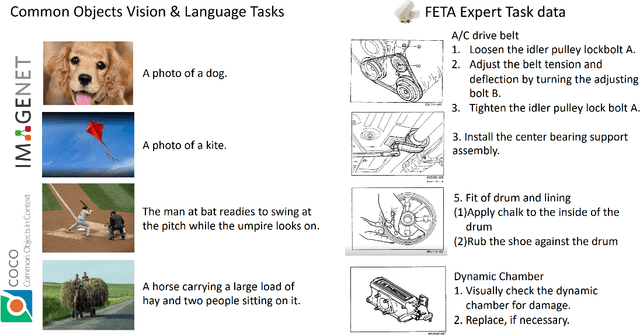

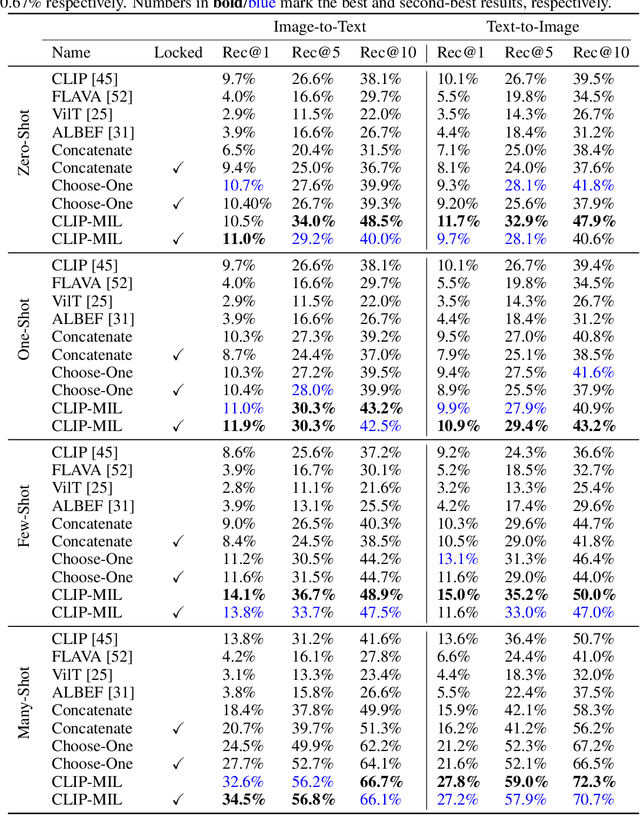
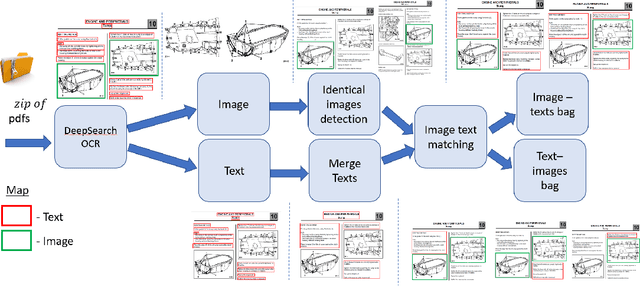
Abstract:Foundation Models (FMs) have demonstrated unprecedented capabilities including zero-shot learning, high fidelity data synthesis, and out of domain generalization. However, as we show in this paper, FMs still have poor out-of-the-box performance on expert tasks (e.g. retrieval of car manuals technical illustrations from language queries), data for which is either unseen or belonging to a long-tail part of the data distribution of the huge datasets used for FM pre-training. This underlines the necessity to explicitly evaluate and finetune FMs on such expert tasks, arguably ones that appear the most in practical real-world applications. In this paper, we propose a first of its kind FETA benchmark built around the task of teaching FMs to understand technical documentation, via learning to match their graphical illustrations to corresponding language descriptions. Our FETA benchmark focuses on text-to-image and image-to-text retrieval in public car manuals and sales catalogue brochures. FETA is equipped with a procedure for completely automatic annotation extraction (code would be released upon acceptance), allowing easy extension of FETA to more documentation types and application domains in the future. Our automatic annotation leads to an automated performance metric shown to be consistent with metrics computed on human-curated annotations (also released). We provide multiple baselines and analysis of popular FMs on FETA leading to several interesting findings that we believe would be very valuable to the FM community, paving the way towards real-world application of FMs for practical expert tasks currently 'overlooked' by standard benchmarks focusing on common objects.
Unsupervised Domain Generalization by Learning a Bridge Across Domains
Dec 04, 2021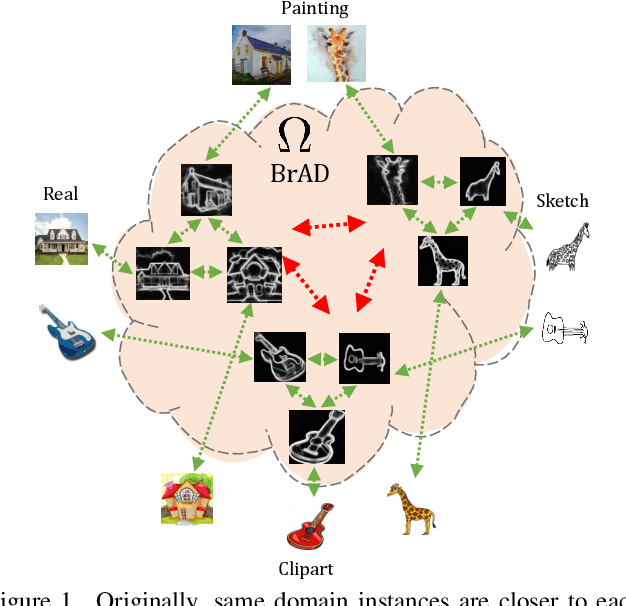
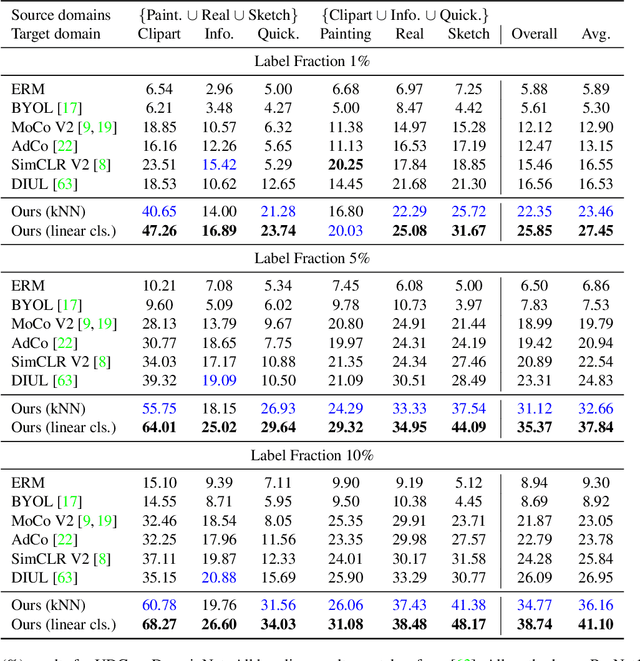

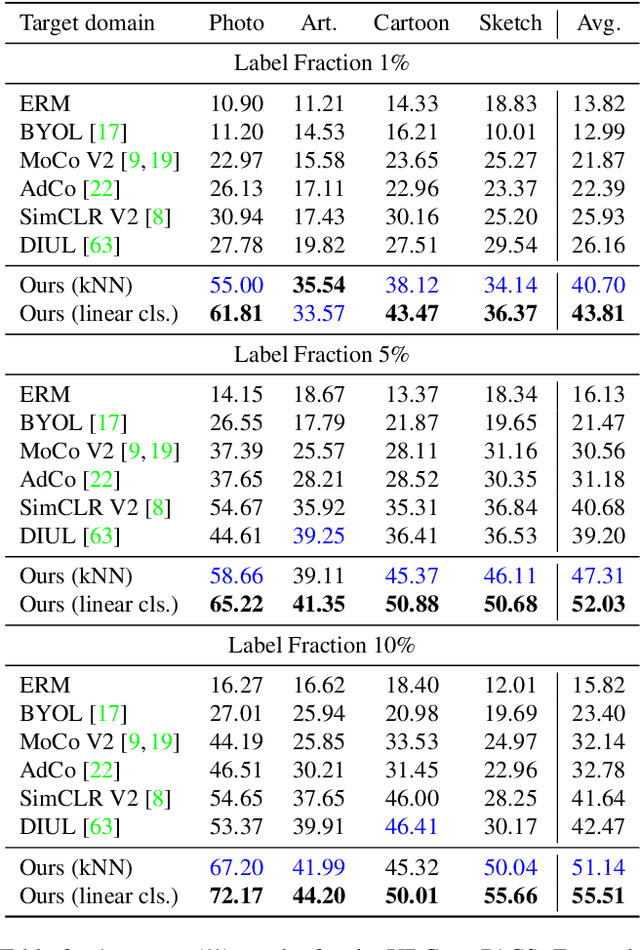
Abstract:The ability to generalize learned representations across significantly different visual domains, such as between real photos, clipart, paintings, and sketches, is a fundamental capacity of the human visual system. In this paper, different from most cross-domain works that utilize some (or full) source domain supervision, we approach a relatively new and very practical Unsupervised Domain Generalization (UDG) setup of having no training supervision in neither source nor target domains. Our approach is based on self-supervised learning of a Bridge Across Domains (BrAD) - an auxiliary bridge domain accompanied by a set of semantics preserving visual (image-to-image) mappings to BrAD from each of the training domains. The BrAD and mappings to it are learned jointly (end-to-end) with a contrastive self-supervised representation model that semantically aligns each of the domains to its BrAD-projection, and hence implicitly drives all the domains (seen or unseen) to semantically align to each other. In this work, we show how using an edge-regularized BrAD our approach achieves significant gains across multiple benchmarks and a range of tasks, including UDG, Few-shot UDA, and unsupervised generalization across multi-domain datasets (including generalization to unseen domains and classes).
Detector-Free Weakly Supervised Grounding by Separation
Apr 20, 2021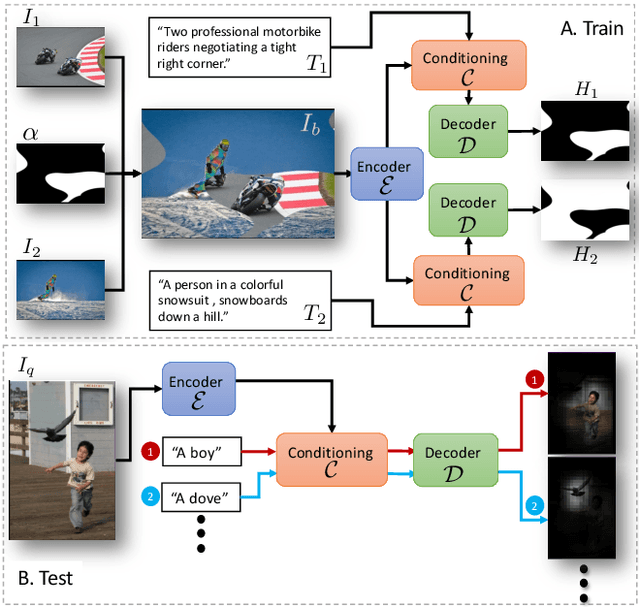
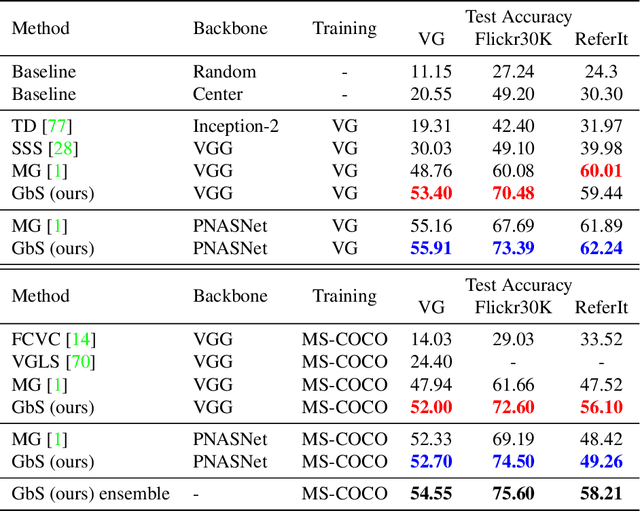
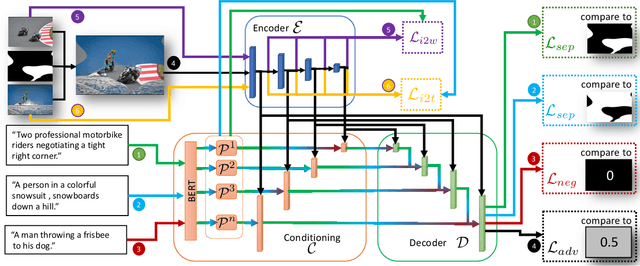

Abstract:Nowadays, there is an abundance of data involving images and surrounding free-form text weakly corresponding to those images. Weakly Supervised phrase-Grounding (WSG) deals with the task of using this data to learn to localize (or to ground) arbitrary text phrases in images without any additional annotations. However, most recent SotA methods for WSG assume the existence of a pre-trained object detector, relying on it to produce the ROIs for localization. In this work, we focus on the task of Detector-Free WSG (DF-WSG) to solve WSG without relying on a pre-trained detector. We directly learn everything from the images and associated free-form text pairs, thus potentially gaining an advantage on the categories unsupported by the detector. The key idea behind our proposed Grounding by Separation (GbS) method is synthesizing `text to image-regions' associations by random alpha-blending of arbitrary image pairs and using the corresponding texts of the pair as conditions to recover the alpha map from the blended image via a segmentation network. At test time, this allows using the query phrase as a condition for a non-blended query image, thus interpreting the test image as a composition of a region corresponding to the phrase and the complement region. Using this approach we demonstrate a significant accuracy improvement, of up to $8.5\%$ over previous DF-WSG SotA, for a range of benchmarks including Flickr30K, Visual Genome, and ReferIt, as well as a significant complementary improvement (above $7\%$) over the detector-based approaches for WSG.
StarNet: towards weakly supervised few-shot detection and explainable few-shot classification
Mar 15, 2020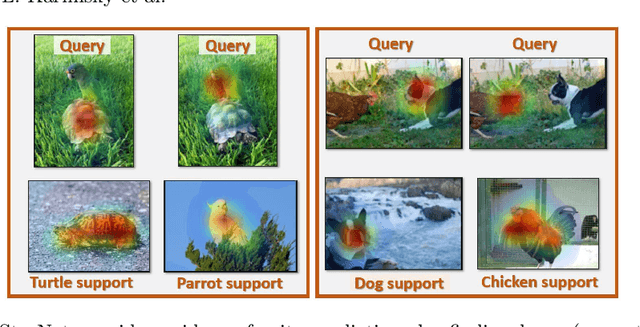
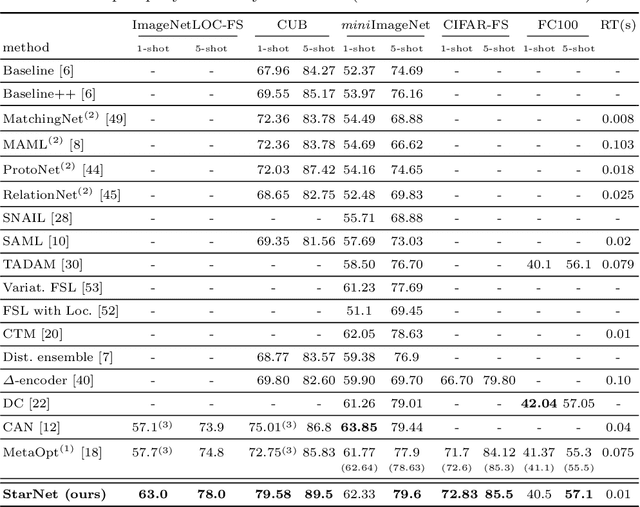
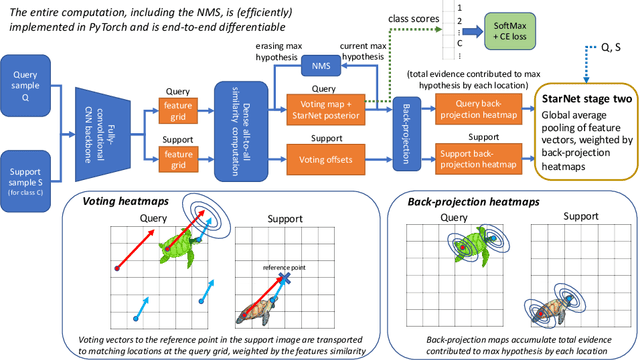
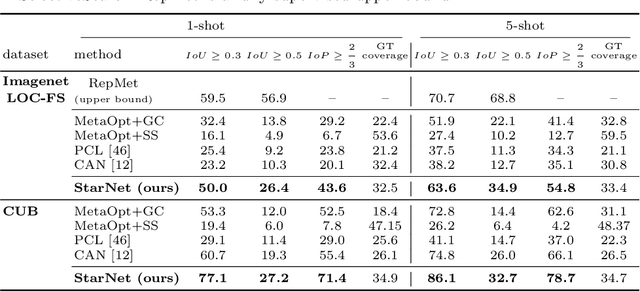
Abstract:In this paper, we propose a new few-shot learning method called StarNet, which is an end-to-end trainable non-parametric star-model few-shot classifier. While being meta-trained using only image-level class labels, StarNet learns not only to predict the class labels for each query image of a few-shot task, but also to localize (via a heatmap) what it believes to be the key image regions supporting its prediction, thus effectively detecting the instances of the novel categories. The localization is enabled by the StarNet's ability to find large, arbitrarily shaped, semantically matching regions between all pairs of support and query images of a few-shot task. We evaluate StarNet on multiple few-shot classification benchmarks attaining significant state-of-the-art improvement on the CUB and ImageNetLOC-FS, and smaller improvements on other benchmarks. At the same time, in many cases, StarNet provides plausible explanations for its class label predictions, by highlighting the correctly paired novel category instances on the query and on its best matching support (for the predicted class). In addition, we test the proposed approach on the previously unexplored and challenging task of Weakly Supervised Few-Shot Object Detection (WS-FSOD), obtaining significant improvements over the baselines.
LaSO: Label-Set Operations networks for multi-label few-shot learning
Feb 26, 2019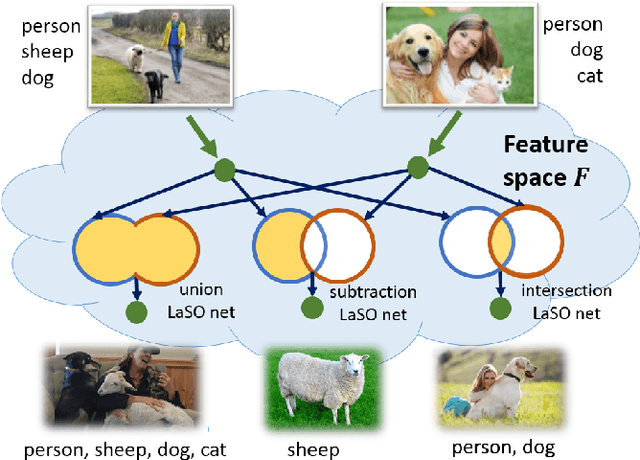
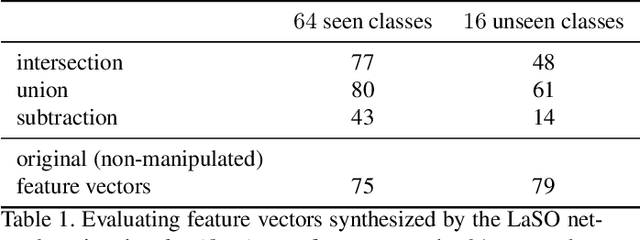


Abstract:Example synthesis is one of the leading methods to tackle the problem of few-shot learning, where only a small number of samples per class are available. However, current synthesis approaches only address the scenario of a single category label per image. In this work, we propose a novel technique for synthesizing samples with multiple labels for the (yet unhandled) multi-label few-shot classification scenario. We propose to combine pairs of given examples in feature space, so that the resulting synthesized feature vectors will correspond to examples whose label sets are obtained through certain set operations on the label sets of the corresponding input pairs. Thus, our method is capable of producing a sample containing the intersection, union or set-difference of labels present in two input samples. As we show, these set operations generalize to labels unseen during training. This enables performing augmentation on examples of novel categories, thus, facilitating multi-label few-shot classifier learning. We conduct numerous experiments showing promising results for the label-set manipulation capabilities of the proposed approach, both directly (using the classification and retrieval metrics), and in the context of performing data augmentation for multi-label few-shot learning. We propose a benchmark for this new and challenging task and show that our method compares favorably to all the common baselines.
 Add to Chrome
Add to Chrome Add to Firefox
Add to Firefox Add to Edge
Add to Edge